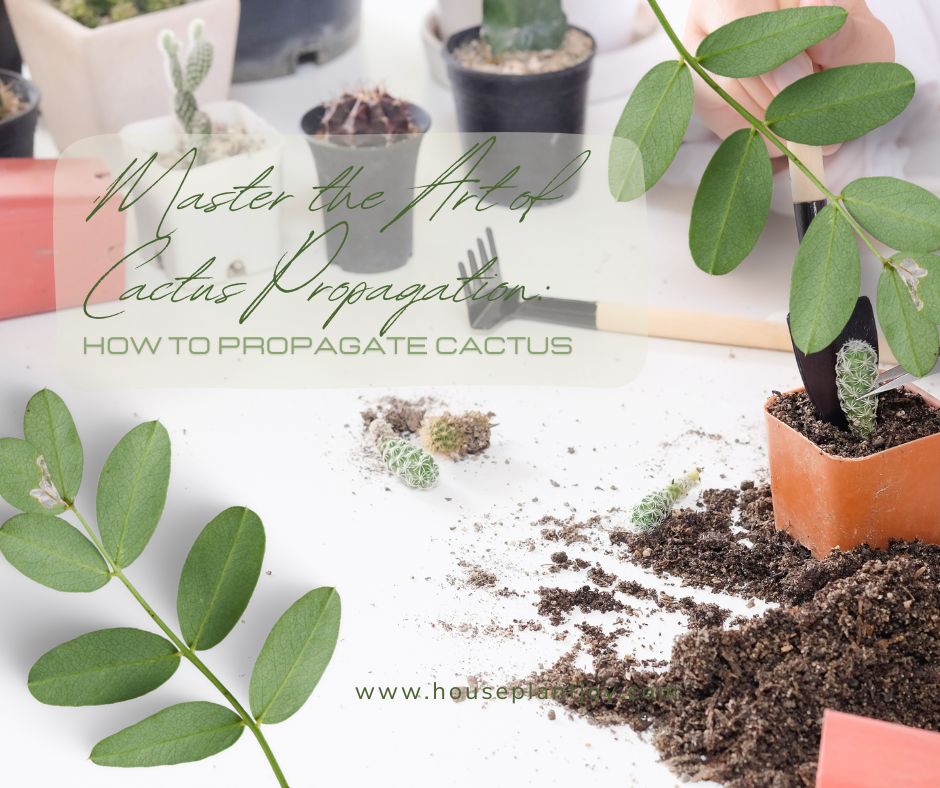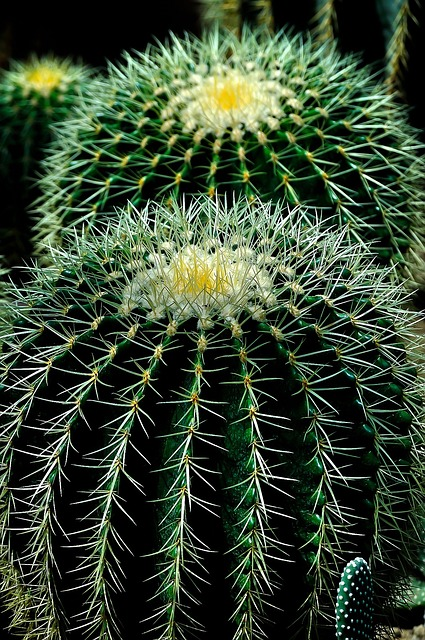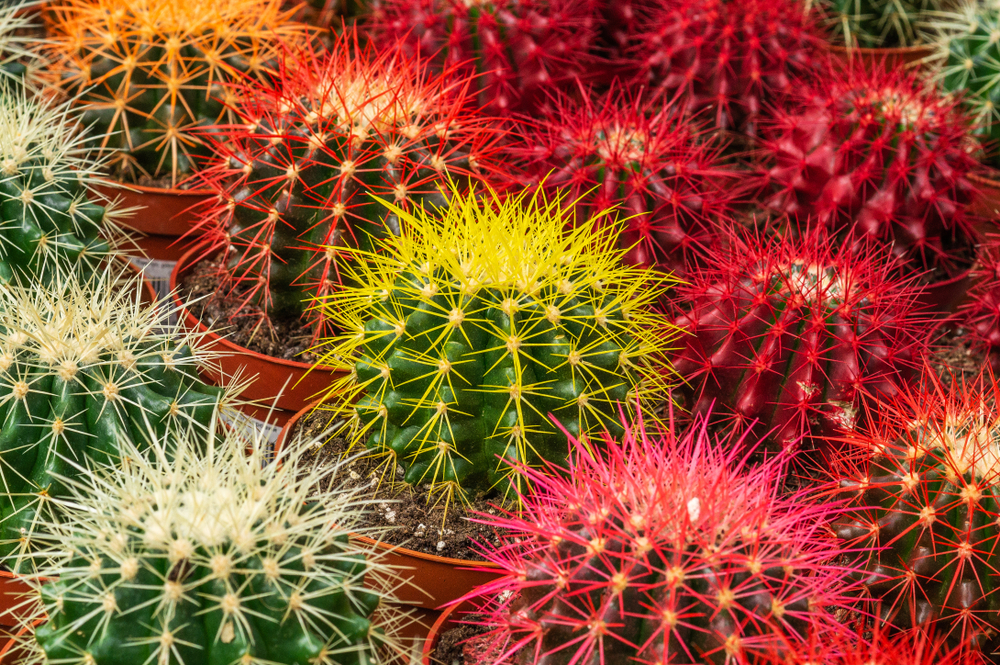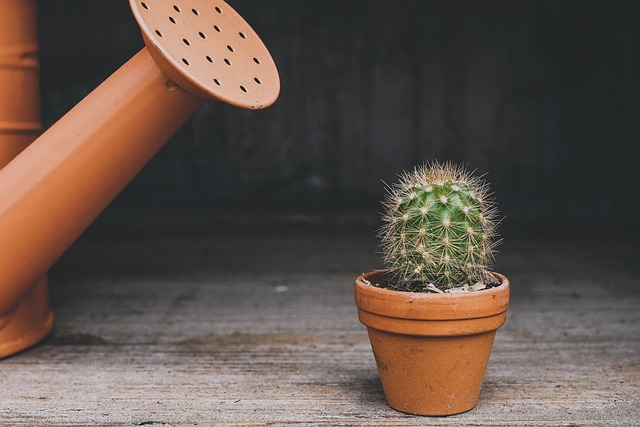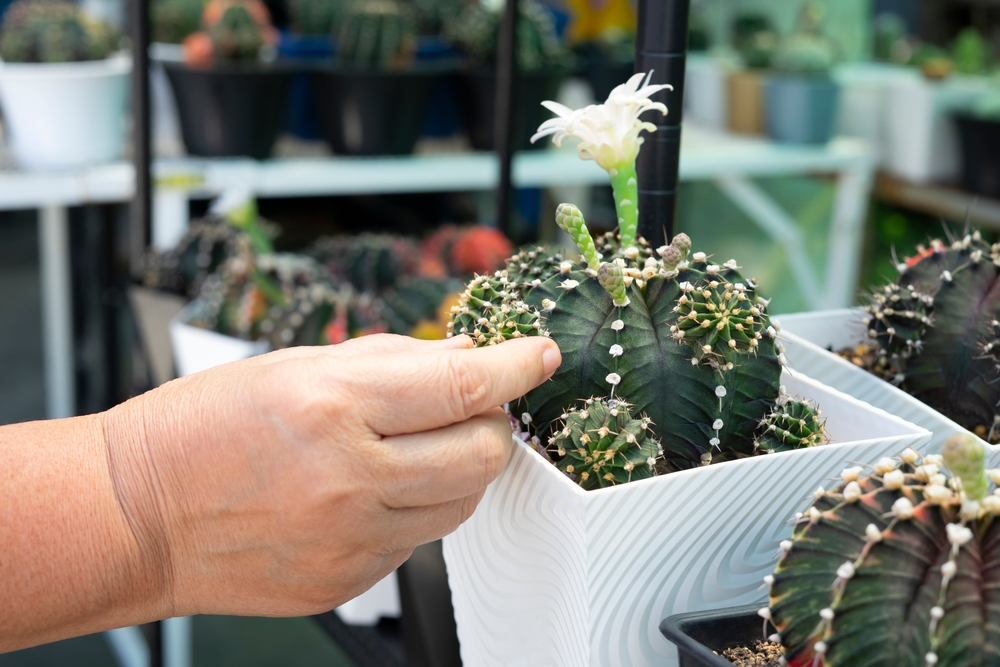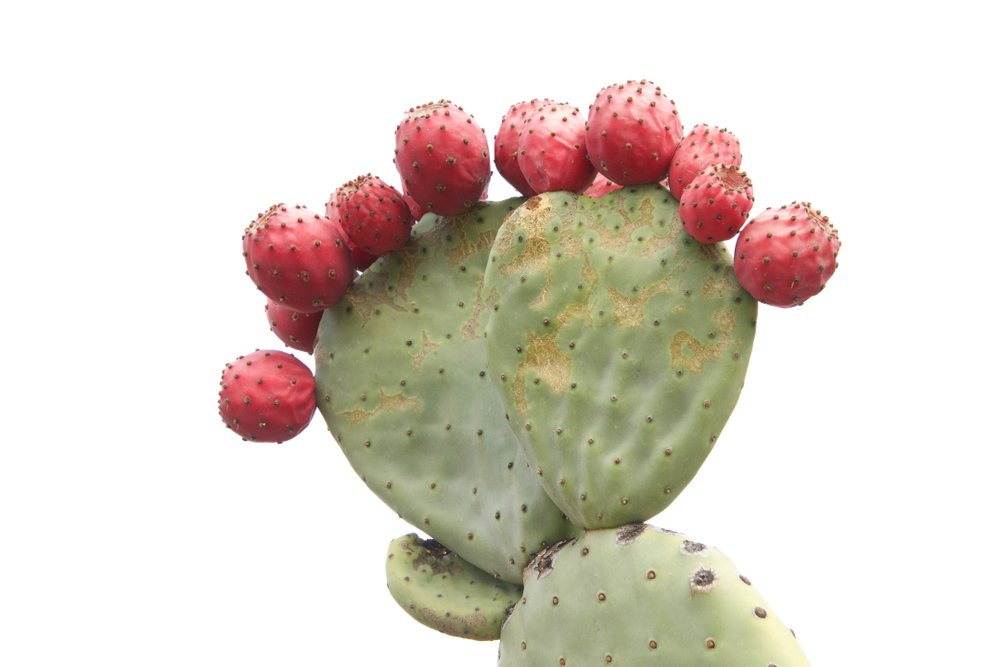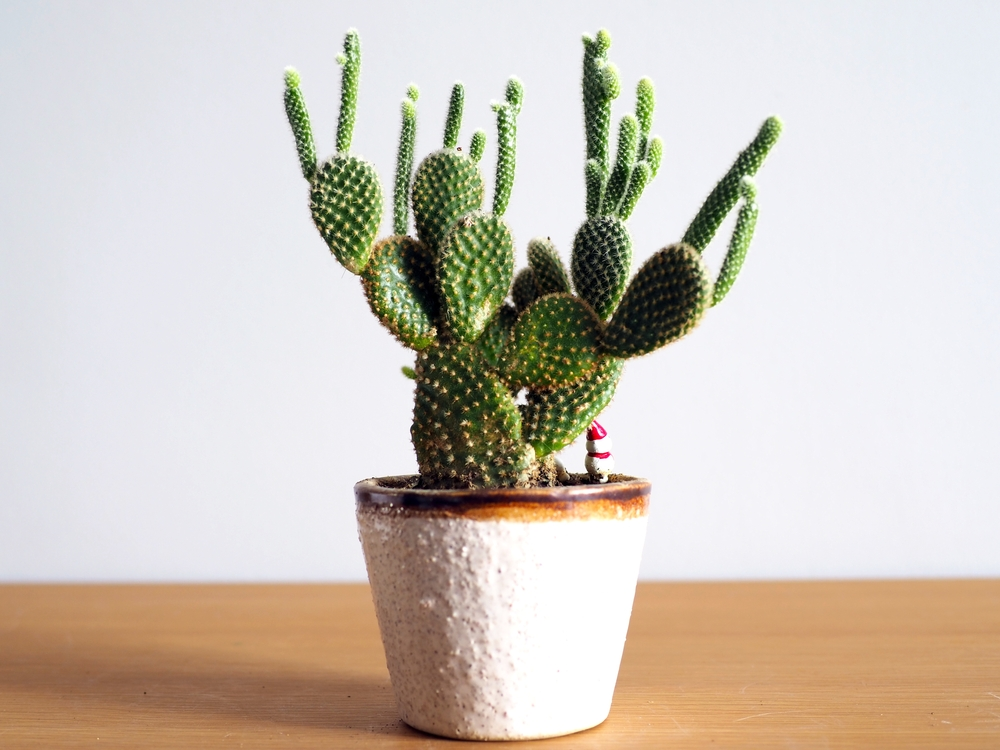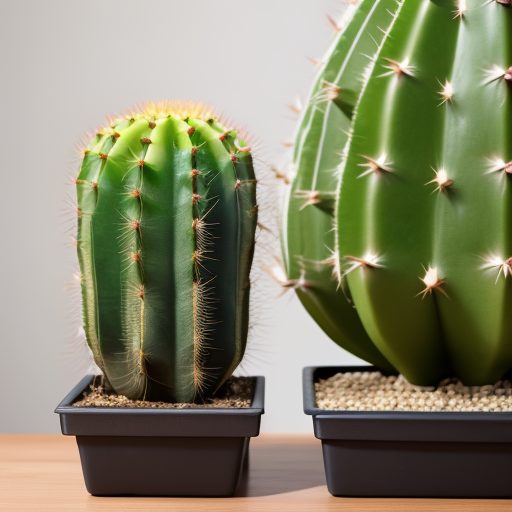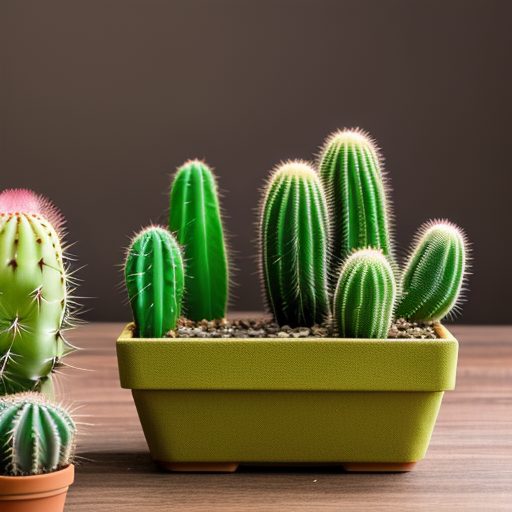HousePlantJoy is supported by our audience. When you purchase through one of our links, we may earn a small affiliate commission. As an Amazon Associate I earn from qualifying purchases. Your cost is not affected.
==================
Welcome to the fascinating world of cactus propagation, where you’ll learn the secrets to multiplying these resilient desert plants with ease and precision. In this comprehensive guide, we’ll delve into the art of cactus propagation, offering you valuable insights and techniques to successfully grow new cacti from existing ones. Whether you’re an experienced gardener looking to expand your succulent collection or a curious newcomer eager to nurture these unique plants, our step-by-step instructions and expert tips will equip you with the knowledge and confidence to propagate cacti like a pro. So, grab your gardening gloves and let’s embark on this rewarding journey into the world of cactus propagation.
Master the Art of Cactus Propagation: A Comprehensive Guide on How to Propagate Cactus
How do those spiky, succulent plants that grow in the desert reproduce and spread their species? For us cactus lovers, learning how to propagate cactus and create new plants from existing ones offers a fascinating hobby. Propagating cactus is not only fun and rewarding, but also a great way to conserve these amazing plants that are threatened by habitat loss and over-collection. Plus, you’ll have plants to share with family and friends!
In this article, I will share with you some of the methods that cacti use to propagate in the wild, as well as some tips and tricks on how to propagate cactus at home. Whether you want to grow more cacti for yourself or give them as gifts to your friends and family, this article will help you get started on your cactus propagation journey.
Cacti are unique plants that survive in often harsh environments. They have adapted to propagate in the wild through various methods, such as seeds, cuttings, and offsets. Seeds are produced from flowers pollinated by insects, birds, or wind. Cuttings are pieces of stems detached from the parent plant and grow roots on their own. Offsets are small shoots that grow from the base or sides of the parent plant and can be separated easily. These methods help cacti to spread and diversify their species in the wild.
Propagate Cacti at Home
When we think of cacti, we imagine harsh, arid landscapes. Yet, the truth is, these resilient plants can thrive in your home or office. This guide will take you on an in-depth exploration of how to propagate cactus, allowing you to cultivate your own desert oasis. In fact, cactus plants make a great focal point.
Propagating cactus is a rewarding and straightforward process. The procedure involves taking a small part of the cactus, such as a pad or segment, and encouraging it to grow into a new plant. This process can be done with various types of cacti, including the prickly pear, saguaro, or even the iconic barrel cactus.
Increase Your Cactus Collection
Many people are drawn to cactus propagation due to the unique beauty of these plants. Their variety of shapes, sizes, and colors can bring a touch of exotic charm to any room. Cacti are known for their hardiness, requiring minimal care once established. If you’re a plant enthusiast looking for a rewarding new project, cactus propagation is the thing for you.
What You Need to Know About Cactus Propagation
Before we dive into the specifics of how to propagate cactus, it’s vital to understand some general principles. First, while cacti are hardy plants, they can still suffer from overwatering, inadequate lighting, or poor soil conditions. Therefore, it’s crucial to provide your new cacti with the right environment to thrive.
Second, not every cactus cutting will successfully take root. This isn’t necessarily a reflection on your propagation skills. It’s just part of the process. Some cuttings may rot or fail to root for no apparent reason. Don’t be discouraged. The key is persistence and patience. In time, your mother plant will produce a baby plant, probably several.
Lastly, safety first! Remember, cacti are covered in spines, which can be painful if you inadvertently touch them. Always use protective gloves or tools when handling your cacti, especially during the propagation process.
Benefits of Propagating Your Own Cactus
Propagating your own cactus offers several benefits. For starters, it’s cost-effective. Instead of purchasing a new plant, you create a new cactus from a cutting or segment of an existing one. Not only does this save you money, but it also allows you to multiply your favorite species of cactus.
Additionally, cactus propagation can be a rewarding pastime. Watching a tiny cutting grow into a full-sized plant is a satisfying experience. It’s a tangible way to observe the life cycle of a plant and gain a deeper appreciation for nature’s wonders.
Lastly, propagating cactus is an excellent way to share your love for these unique plants. Cactus cuttings make for great gifts that can last for years, bringing joy to friends and family.
Step-by-step Guide on How to Propagate Cactus
Now that we’ve covered the basics, let’s dive into the step-by-step guide on how to propagate cactus. Firstly, select a healthy cactus pad or segment. Ensure it’s free from any signs of disease or pests. Using a clean, sharp knife, make a cut at the base of the pad or segment.
Secondly, allow the cutting to callous. This means allowing the cut end to dry out, forming a hard layer. This can take anywhere from a few days to a week, depending on the size of the cutting and the environmental conditions. This step is crucial to prevent the cutting from rotting once planted.
Next, it’s time to plant your cactus cutting. Use a cactus-specific soil mix, which is well-draining to prevent water-logging. Plant the calloused end into the soil, ensuring it’s stable. Water sparingly until roots establish.
Determining the Length of Time to Allow the Cactus Cuttings to Callous
According to the web search results, the length of time to allow the cactus cutting to callous depends on the type and size of the cactus, as well as the environmental conditions. However, a general rule of thumb is to let the cut end dry for at least four or five days before planting1.
Some sources suggest that thicker cuttings may need up to 45 days to callous over2. The purpose of callousing is to prevent rotting and infection, and to promote rooting. To callous a cactus cutting, you need to cut a healthy stem from the parent plant, remove any leaves or flowers, and place the cutting in a dry and shady place.
You can use a paper towel or a drying agent to help speed up the process3. Once the cut end has formed a hard crust, you can plant the cutting in a well-draining cactus mix and water sparingly.
How to Plant Cactus Cuttings
Planting cactus cuttings is a critical step in cactus propagation. After allowing your cutting to callous, prepare a pot with cactus mix soil. Make a deep hole to accommodate the cutting, and gently place the calloused end into the soil.
Ensure the cutting is stable in the pot. You might need to prop it up with small rocks or use a stake for larger cuttings. Remember, stability is essential for the cutting to establish its roots.
Water the soil lightly. Overwatering can cause the cutting to rot, so less is more at this stage. After planting, place the pot in a warm, bright spot, but avoid direct sunlight, which can scorch the cutting.
Do I Need to Use a Rooting Hormone?
When we taking cuttings from other plants, we often dip the cut into a rooting hormone to stimulate root growth. Is this needed with cactus?
Using a rooting hormone when planting cactus cuttings is not necessary, but it can help speed up the rooting process and increase the chances of success. Rooting hormone is a substance that stimulates the growth of roots from the cut end of a cactus stem. It can be found in powder, liquid, or gel form at most garden centers or online1.
Some Factors That May Influence Your Decision to Use Rooting Hormone Are:
- The type of cactus you are propagating. Some cacti are easier to root than others and may not need rooting hormone at all. For example, opuntia or prickly pears, columnar cacti, and pincushion and globular cacti are known to root well from stem cuttings1.
- The season you are propagating. Rooting hormone can be especially helpful if you are trying to root cacti in winter, when the natural rooting process takes longer and the risk of rotting is higher2.
- The size and condition of your cuttings. Smaller and healthier cuttings tend to root faster and better than larger and damaged ones. If your cuttings are large or have uneven or jagged cuts, you may want to use rooting hormone to improve their chances of survival3.
To Use Rooting Hormone on a Cactus Cutting, Follow These Steps:
- Prepare a soil mix that is half sand and half peat moss4. This will provide good drainage and aeration for your cuttings.
- Disinfect your knife or scissors with warm soapy water or rubbing alcohol. This will prevent the spread of diseases and infections.
- Cut a healthy stem from the parent plant near a node, which is a slightly swollen knob on the stem. Remove any leaves or flowers from the node area.
- Moisten the bottom few inches of the cutting with water. This will help the rooting hormone stick to it.
- Pour some rooting hormone into a separate container and dip or roll the bottom few inches of the cutting into it. Shake off any excess hormone.
- Make a hole in the soil mix with your finger or a pencil and insert the cutting into it. Firm the soil around the cutting and water lightly.
- Place the pot in a bright but indirect light location and keep the soil moist but not wet. Avoid direct sunlight, which can scorch the cutting.
- Wait for roots to develop, which can take anywhere from two to eight weeks depending on the type of cactus and the environmental conditions3. You can check for roots by gently tugging on the cutting. If it resists, it has rooted.
Once your cactus cutting has rooted, you can transplant it to a larger pot with a well-draining cactus mix and treat it as a new plant. Enjoy your new cactus!
Video Credit: @ExpeditionHomestead
Growing Cactus from a Cutting: Tips and Techniques
Growing cactus from a cutting can seem daunting, but it’s a breeze with the right tips and techniques. One essential tip is to be patient. Root development takes time. It could be several weeks before your cutting starts showing signs of growth.
Another tip is to avoid overwatering. Cacti are desert plants and are adapted to dry conditions. They store water in their tissues and can survive long periods without watering.
Lastly, ensure your cutting gets plenty of indirect sunlight. While cacti love the sun, direct sunlight can be too intense for a new cutting, causing it to dry out or even burn.
How to Propagate Prickly Pear and Other Types of Cactus
The process of propagating prickly pear and other types of cactus is similar to what we’ve discussed. However, some cacti might require specific care. For instance, for prickly pear, it’s best to remove a pad at least six months old. Younger pads might need more stored energy to root successfully.
When propagating columnar cacti, like the Saguaro or the Peruvian Apple cactus, cut a segment from the mother plant and allow it to callous before planting. For ball cacti, like the Golden Barrel or the Bishop’s Cap, it’s possible to propagate from offsets – small ball-like growths that appear around the base of the plant.
Regardless of the type, always remember the basics: use clean, sharp tools; allow cuttings to callous; plant in well-draining soil; and water sparingly until roots establish.
How to Plant a Large Cactus Cutting
Planting a large cactus cutting follows the same principles as smaller cuttings, albeit with a few tweaks. Due to their size, large cuttings might need extra support to remain stable while they establish roots. Use stakes or props to keep the cutting upright.
Also, remember that larger cuttings will take longer to callous and root. Be patient and resist the urge to overwater. Monitor the cutting closely for any signs of rot or disease, and keep it in a warm, bright spot, away from direct sunlight.
How to Propagate a Tall Cactus: A Detailed Guide
Propagating a tall cactus can be challenging due to its size and weight. However, with the right tools and techniques, it’s achievable. Use a sharp, clean saw to cut. Ensure it’s straight since this will affect how the cutting stands when planted.
After cutting, allow the end to be callous. This could take several weeks due to the size of the cut surface. Once calloused, plant the cutting in a large pot with well-draining soil. Use stakes or props to keep it upright.
Remember, tall cacti might take longer to establish roots, so be patient. Provide bright, indirect light and water sparingly until roots start to develop.
Can You Cut Off a Piece of Cactus and Plant It?
Absolutely! This is the essence of cactus propagation. Whether it’s a pad from a prickly pear, a segment from a columnar cactus, or an offset from a ball cactus, you can cut it off and plant it. Just remember to allow the cut end to callous before planting, and provide the right care and conditions for the cutting to thrive.
Caring for Your Newly Propagated Cactus
Once your cactus cutting has rooted and started growing, it’s time to shift from propagation mode to care mode. Regularly check your cactus for signs of pests or diseases. Water sparingly, especially during colder months when cacti enter a period of dormancy.
Provide plenty of sunlight but protect your cactus from intense, direct light which can scorch it. Repot your cactus as it grows, ensuring it always has enough space. Lastly, remember to enjoy the process. Cactus care is a rewarding and therapeutic activity.
Mastering the Art of Cactus Propagation
Mastering the art of cactus propagation is an exciting journey. It’s a blend of science and art, patience and passion. Whether you’re a seasoned gardener or a beginner just starting, propagating cacti offers a unique opportunity to engage with nature and cultivate beautiful, resilient plants.
Remember, cactus propagation isn’t just about growing plants; it’s about growing your understanding and appreciation of these amazing desert dwellers. So, why wait? Grab a cutting, get planting, and watch the magic of cactus propagation unfold.
Nurturing New Beginnings: Cactus Propagation’s Rewarding Journey
The art of cactus propagation is both a science and an art, offering plant enthusiasts a rewarding and satisfying way to expand their collection of these hardy desert wonders. Throughout this guide, we’ve explored the ins and outs of propagating cacti, from selecting the right tools and techniques to nurturing your new plants to maturity.
Remember, while cactus propagation may seem intimidating at first, it’s a skill that can be mastered with patience and practice. The satisfaction of watching tiny offshoots grow into healthy, thriving cacti is a joy that any gardener can appreciate.
Whether you’re aiming to create a diverse cactus garden, share your love of succulents with friends, or simply enjoy the process of nurturing new life, cactus propagation offers endless possibilities. So, as you embark on your journey of propagating these remarkable plants, take pride in the knowledge that you’re not only growing cacti but also cultivating a deeper connection with the natural world. Happy propagating!
Join the Thriving Houseplant Community on Our Social Media Platforms!
At Houseplant Joy, we’re more than just a source of information; we’re a community of passionate houseplant enthusiasts who share your love for cacti and all things green. If you’re eager to deepen your connection with the plant world, our social media accounts are the perfect place to start.
On Facebook, we foster engaging discussions, connect with fellow enthusiasts, and provide a space to share your own plant journeys.
Our Instagram feed is a visual delight, featuring stunning plant photography, care tips, and behind-the-scenes glimpses into our green world.
For the creative souls and DIY enthusiasts, our Pinterest boards are brimming with ideas for plant-themed decor, propagation techniques, and much more.
On Twitter, you’ll stay updated with the latest in the houseplant world, from trending varieties to expert advice.
And if you’re looking for quick, informative, and entertaining plant-related content, our TikTok channel is your go-to destination.
But Houseplant Joy isn’t just about what we share; it’s about the community we’re building. It’s about you connecting with like-minded plant lovers, learning from one another, and celebrating the joy that houseplants bring into our lives.
So, whether you’re a seasoned plant parent or just starting your green journey, our social media platforms offer a wealth of knowledge, inspiration, and a supportive community eager to welcome you with open arms. Let’s cultivate our shared love for cacti and houseplants together! ?? #HouseplantCommunity #PlantLove
More Interesting Reads

